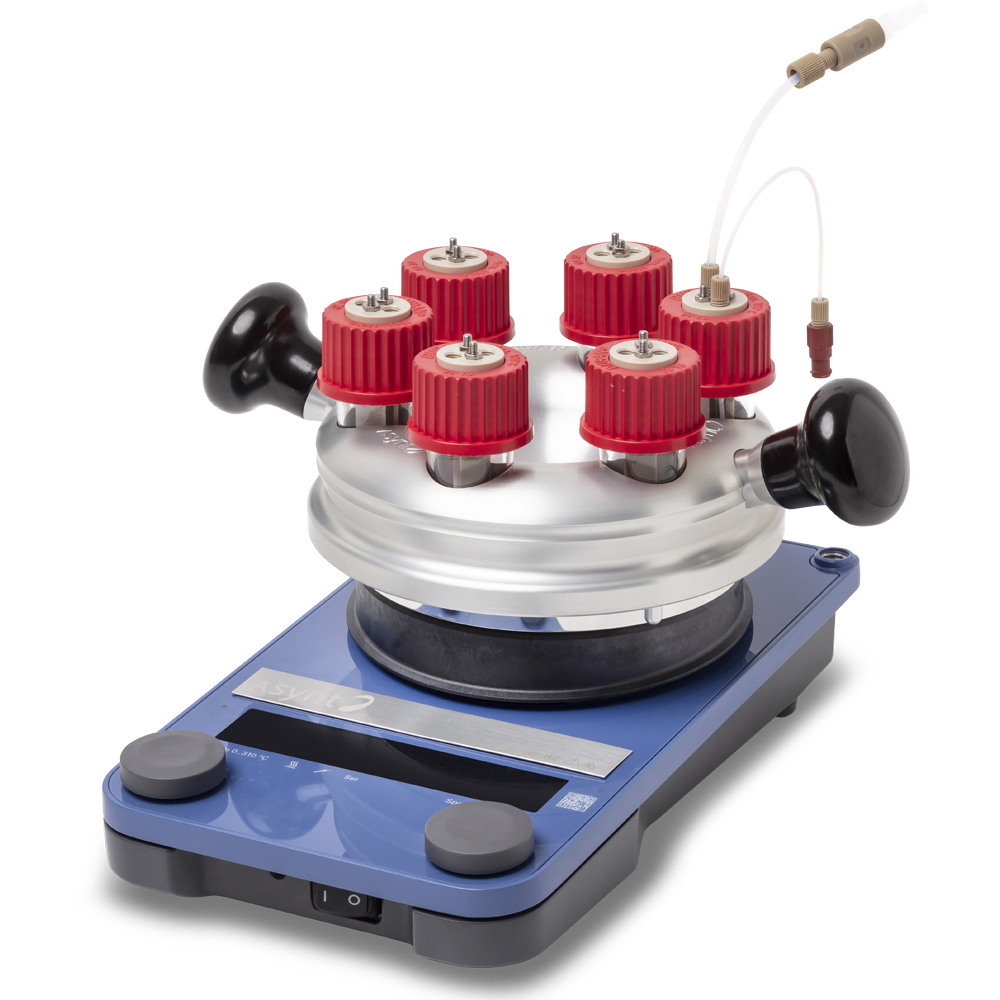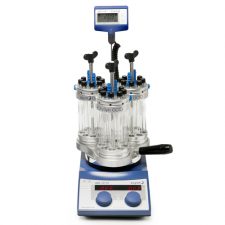Parallel synthesis plays a central role in compound development across a range of chemistry fields and industries, from pharmaceuticals to fragrance. There are almost as many approaches to parallel synthesis as there are applications. In this blog, we’ll cover some key examples of both.

What processes is parallel synthesis used for?
Parallel synthesis is used in a variety of processes where high-throughput experimentation is critical. In drug discovery, it is used to generate large libraries of compounds for screening, enabling chemists to quickly identify potential drug candidates. By testing multiple reactions under different conditions simultaneously, parallel synthesis accelerates the optimization of lead compounds, reducing the time and cost of pharmaceutical development. Similarly, in the field of materials science, parallel synthesis is applied to develop new polymers, catalysts, and other functional materials. Beyond drug discovery and materials science, parallel synthesis is widely used in industries like agrochemicals, fragrances, and fine chemicals.
Methods for Parallel Synthesis:
Photochemistry:
Parallel photochemistry allows for multiple photochemical reactions to be run simultaneously with control variables such as reactant composition or wavelength. Asynt has two options for batch parallel photochemistry, the Illumin8 and the three-position Lighthouse.
The Illumin8 features 8 LEDs in a module, facing towards 8 10 mL reaction vials at a distance of 1 cm. This ensures each vial receives equal irradiation.
The three-position Lighthouse has three separate photoreactors arrayed in parallel on a single heating/cooling base.
The Illumin8 parallel photoreactor has options for heating, cooling, inert atmosphere and interchangeable wavelength modules
Electrochemistry:
Parallel electro-reactors use a set of electrochemical cells powered in series. Variables can include the concentration of reactants as well as electrode material. By running electrochemistry in parallel, you can not only increase your overall throughput but also screen different electrodes and solutions.
 The ElectroReact allows for screening of different electro material and solutions under consistent and repeatable conditions
The ElectroReact allows for screening of different electro material and solutions under consistent and repeatable conditions
Pressure Chemistry:
Parallel pressure reactions can be run at the same or, with the right equipment, variable pressures. Our tools for parallel pressure chemistry include the Quadracell (4 position), Multicell (10 position), and options for partially or fully custom reactors. These tools allow for rapid screening of otherwise challenging reaction pathways, such as hydrogenation or carbonylation. Safety features can include pressure release valves and burst disks.
The Multicell runs 10 reactions at the same pressure. There is also the options for a modified reactor that can operate a different pressures
Parallel Heating Blocks:
Parallel heating blocks allow for multiple reactions to be run on a single hotplate with both vials and round-bottom flasks. This allows for uniform stirring and heating across the reactions. Asynt has a range of parallel heating (and cooling) tools available. Our MULTI range accommodates up to 3 round-bottom flasks of volumes ranging from 5 mL to 500 mL and up to 27 reaction vials (depending on the required diameter). We also have the OCTO, an 8-position parallel reactor that allows for the use of an inert atmosphere.
By running 3 Octo’s in parallel you can have up to 24 reactions, with inert atmosphere, on a single hotplate
Conclusion:
Parallel synthesis is an invaluable approach for accelerating research and development in a wide range of industries. By enabling multiple reactions to be conducted simultaneously under carefully controlled conditions, it significantly reduces time and resource demands while improving reproducibility. Whether you are working with photochemistry, electrochemistry, pressure chemistry, or other methods, having the right tools is essential for maximizing efficiency and ensuring reliable results. Our range of parallel synthesis tools provides researchers with versatile options tailored to their needs.
Interested in finding out how one of these tools would enhance your research? If you’d like an online 1-2-1 demo of any of these parallel synthesis tools, don’t hesitate to get in touch – or add your details to the short form below and we’ll arrange a time and date.
Request more info










